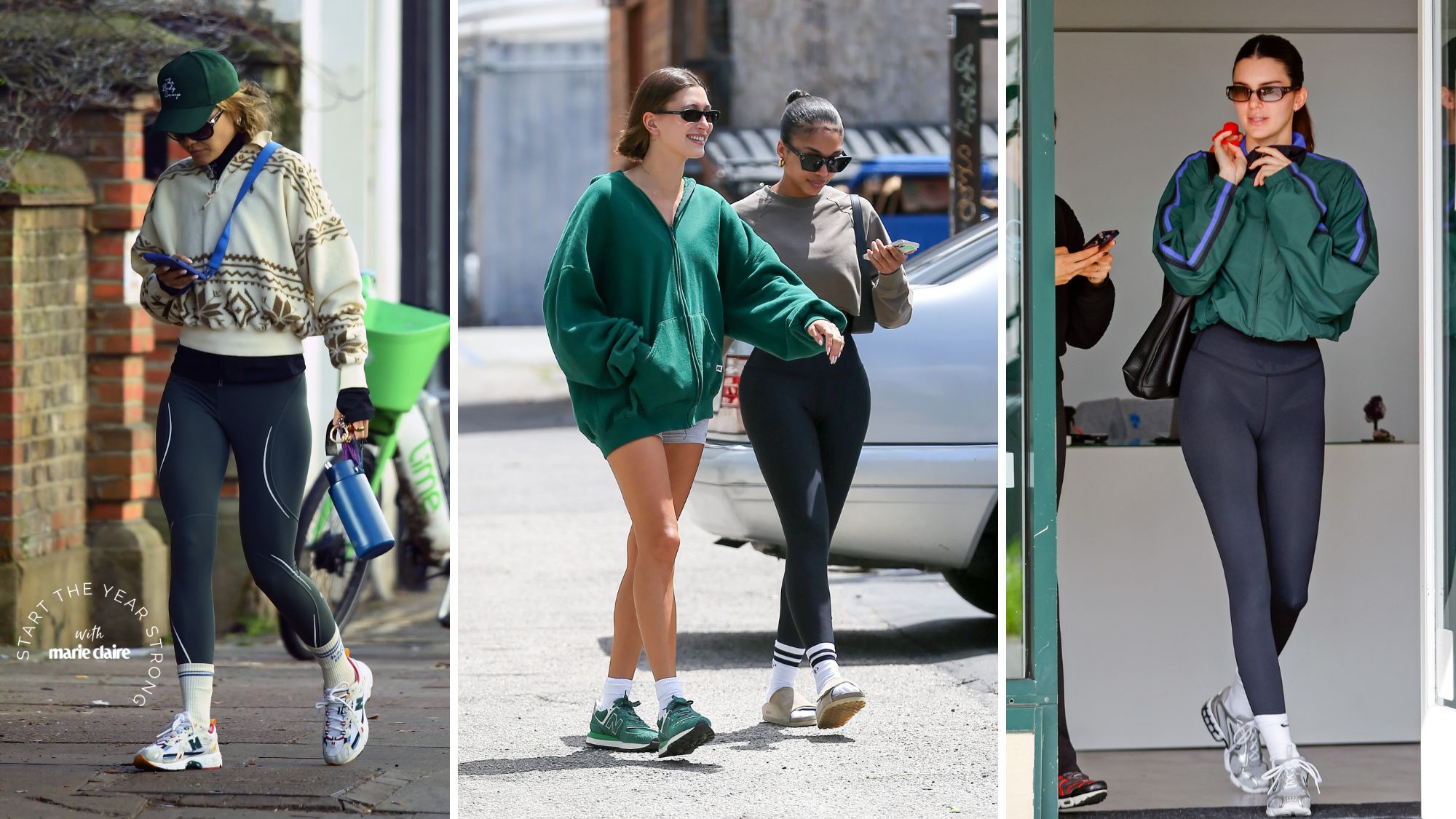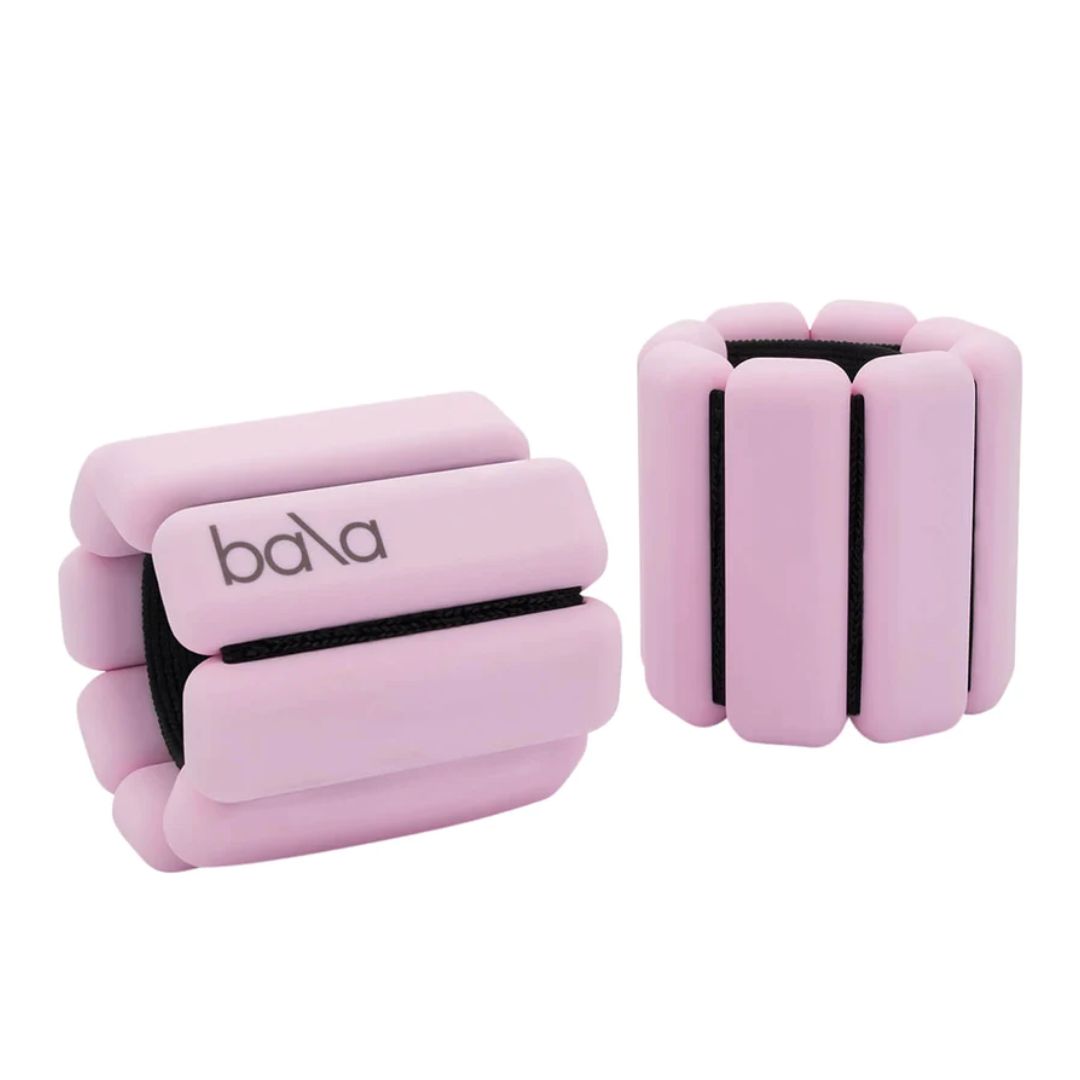Wrist weights are set to be the most in-demand piece of kit for 2024 – how they seriously level up your home workouts
Rita Ora, Hailey Bieber, Lori Harvey and Kendall Jenner are all thought to be fans.


This year, we’ve witnessed the renaissance of the treadmill, as TikTok users flock to jump on the many walking trends from the comfort of their own homes (cosy cardio, anyone?), along with a dramatic increase in demand for at-home friendly Pilates sessions, and a buzzing interest in ankle weights workouts. What’s next? Well, if Google stats are anything to go by, wrist weights are set to be among the most popular pieces of fit kit for 2024.
Similar to ankle weights, wrist weights are compact, sandbag-style wrap-around weights, which get secured around the wrists for workouts. They're available in various sizes and weights to accommodate different experience levels, and they tend to be adjustable too.
Much like the benefits of ankle weights, wrist weights can be a handy tool for upping your fitness from the comfort of your own home. Research suggests they could be a welcome addition to your at-home workouts. One study, published in the Journal of Taibah University Medical Sciences, concluded that exercise using ankle or wrist weights can produce significant improvements in certain components of body composition. A separate study, which looked into the effects on physiologic responses of wearing ankle and wrist weights during treadmill running, found that, because ankle and wrist weights increase training intensity and energy expenditure during treadmill running, they may result in greater increases in cardiovascular fitness.
Celebrities and influencers alike seem to swear by them, too, with Rita Ora, Hailey Bieber, Lori Harvey and Kendall Jenner all rumoured to be fans of the handy piece of kit. Another among the already-converted? Spice Girl, designer and beauty founder Victoria Beckham, who in an interview with Harper’s Bazaar earlier this year said: “When I want to sneak a workout in and I’m low on time, I love wearing the Bala Bangles wrist and ankle weights. They’re a sneaky way to feel that burn in a short amount of time.” Sneaky or not, she’s right on the money.
While wrist weights won’t be the most suitable piece of equipment for everyone (we’ll touch on this later), they certainly seem to be an easy way to up your home workouts. Keen to find out more? Below, we chat to Lotti Benardout, founder of Studio Anatomy, who shares your need-to-knows about working out with wrist weights. Don't miss one MC UK staffer's ankle weight review, while you're here.
Wrist weights: your guide
How do you use wrist weights?
Wrist weights, according to Benardout, are a simple but incredibly effective accessory. “In Pilates, depending on the client, we’ll add them around the wrists or ankles to increase the intensity of certain moves and flows,” she says. “Using props like wrist weights is a great way to mix things up. The essence of the exercise remains the same, but clients can achieve a deeper muscle connection.”
Similarly to dumbbells, wrist weights increase the load placed on the muscles in the arms, back and core, in turn, increasing the intensity of the exercise and building strength and endurance over time.
Celebrity news, beauty, fashion advice, and fascinating features, delivered straight to your inbox!
What size wrist weights should I get?
Benardout advises buying adjustable weights, so that they can be used as both wrist and ankle weights, if you so wish. “Quality really matters too, so try to avoid cheap, flimsy weights and invest in a durable and well-made set that will last. My favourites are Bala Bangles,” she says.
Be mindful, too, of choosing the right weights for your current experience level and the programme you’re currently following. “Adding weights shouldn’t compromise your form or alignment,” Benardout warns. “Comfort is also key; make sure the weights are comfortable to wear and don’t rub or irritate your skin.”
Benefits of wrist weights
“Adding even a small amount of extra resistance to your workout can help increase muscle strength and definition,” says Benardout. Wrist weights, although only light in weight, can be incredibly helpful for getting you closer to your strength and muscle gain goals. They could also contribute to overall health.
Research, published in the Journal of Taibah University Medical Sciences, suggests that, similarly to light resistance training with dumbbells, using wrist/ankle weights may decrease your risk of cardiovascular disease. “They can also be used as a great tool for helping improve coordination and balance, using the extra weight to challenge your body’s stability,” says Benardout.
Ultimately, wrist weights are a super convenient workout accessory, Benardout says. “They are small, portable and easy to adjust which means they can be added into an exercise without disrupting the flow or pace of a class.” Plus, they’re especially beneficial for people who cannot or who have trouble gripping dumbbells and other weight alternatives.
All that said, wrist weights aren’t ideal for everyone. “It would be best to avoid adding wrist weights if you have pre-existing wrist, elbow, or shoulder injuries, as well as if you have a condition such as arthritis or osteoporosis,” Benardout advises. Always get your training programme and equipment signed off by your GP if you’re trying something new or have a pre-existing condition.
Maintaining good form while using wrist weights is crucial, and it’s important to pay close attention to your posture and alignment when adding any additional weight to your workout, she says. “Start slow and ease your way into using weights – however light. We always advise gradually increasing the weight, and the duration of which you wear them, to avoid overdoing it and causing injury.”
Does walking with wrist weights help?
Depending on your goal, wearing wrist weights while walking may help you achieve it, since they can increase the intensity of a workout. “The added weight makes your body work harder, increases your heart rate and can improve your cardiovascular fitness,” says Benardout. “It can also help improve your endurance over time, allowing you to walk longer distances with less fatigue.”
It’s worth noting however, that when used incorrectly or without proper form, using wrist weights can increase your risk of injury to the wrists, elbows, shoulders and neck.
5 best exercises to do with wrist weights, chosen by a PT
1. Dance cardio workout
What? A speedy dance workout that can be done with or without wrist weights.
Why? "If you’re looking to add some cardio to your wrist weight workout, here’s a nice example," says Benardout. "The moves are low-impact, so safe on the joints, but with a dance twist to get that heart rate pumping."
How long? 10 minutes.
2. Arm sculpt workout
What? A quick arm workout that can be done with or without wrist weights.
Why? "Progression is key. This is a great video to start building arm strength and work your way up to adding wrist weights," says Benardout. "All the moves can be done with the addition of weights when you’re ready."
How long? 15 minutes.
3. Pilates arm workout
What? A Pilates arm workout.
Why? It's a speedy Pilates-inspired session that you can do anywhere – gym or living room – and demonstrates a different way of using wrist weights (by holding them in your palms instead of strapping them around your wrists), which may be more suitable for some people.
How long? 15 minutes.
4. Wrist weight arm workout
What? Wrist weight upper body workout.
Why? This is a short, upper-body Pilates session that targets the muscles in the arm, the upper back and the core. It can be done with or without wrist weights, and is ideal for training on the go.
How long? 15 minutes.
5. Pilates bangle workout
What? 20-minute Pilates workout.
Why? "I’m a big fan of a standing series, and this is a good example of a 20-minute workout that can all be done standing," says Benardout. "The focus is mainly on arms, but there are some great additions to give you a full body workout."
How long? 20 minutes.
Shop MC UK's go-to ankle weights:

Abbi Henderson is a freelance journalist and social media editor who covers health, fitness, women’s sport and lifestyle for titles including Women's Health and Stylist, among others.
With a desire to help make healthcare, exercise and sport more accessible to women, she writes about everything from the realities of seeking medical support as a woman to those of being a female athlete fighting for equality.
When she’s not working, she’s drinking tea, going on seaside walks, lifting weights, watching football, and probably cooking something pasta-based.






